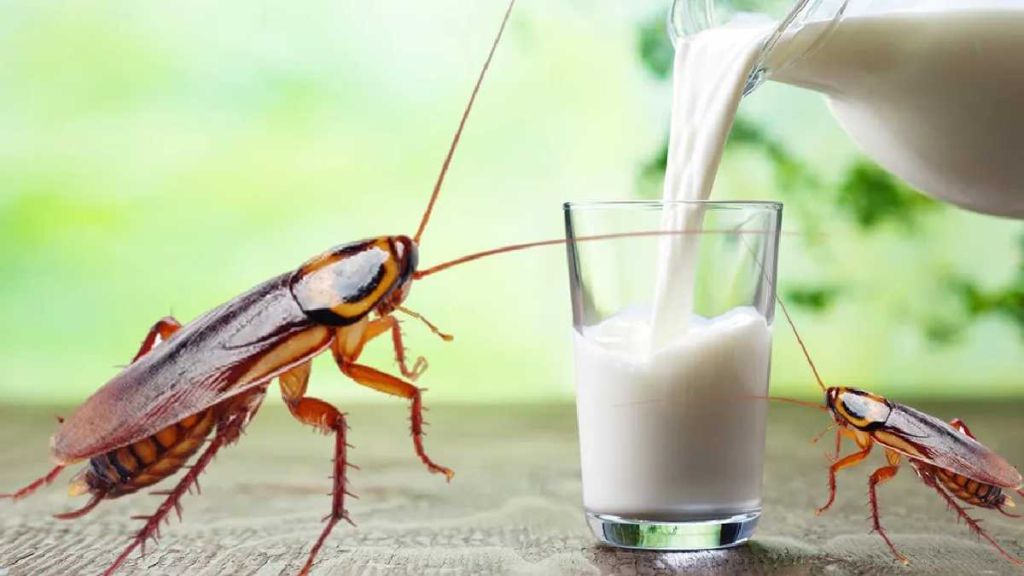The idea of consuming cockroach milk may sound shocking, but scientists have discovered that a certain species of cockroach produces a highly nutritious milk-like substance. Researchers studying the Pacific beetle cockroach (Diploptera punctata) found that it secretes protein crystals packed with essential amino acids, fats, and sugars to feed its young.
Some studies even suggest that cockroach milk may be four times more nutritious than cow’s milk. This revelation has sparked widespread debate, with some wondering if this milk could become the next big superfood.
The Discovery of Cockroach Milk
Cockroaches are among the most resilient creatures on Earth, having survived millions of years of evolution. However, not all cockroaches are the same. The Pacific beetle cockroach is unique in that it gives birth to live offspring rather than laying eggs. To nourish its young, the mother produces a milk-like substance that contains nutrient-rich protein crystals.
Researchers first identified these protein crystals in the mid-2000s, but interest in their potential as a human food source has grown in recent years.
A 2016 study conducted by scientists in India and the U.S. analyzed the structure of these protein crystals and found that they contain essential amino acids, fats, and sugars in a highly concentrated form. These crystals are believed to provide a slow and steady release of nutrients, making them an efficient energy source.
Read : Miners Trapped In Buffelsfontein Gold Mine Ate Human Flesh, Cockroaches to Survive: Report
According to the study, the nutritional content of this milk is significantly higher than that of traditional dairy products. Scientists estimate that the protein content is nearly four times greater than that of cow’s milk, making it one of the most nutrient-dense natural substances known.
Is Cockroach Milk a Superfood?
The idea of this milk as a superfood has generated both excitement and skepticism. Supporters argue that it could serve as a sustainable and highly nutritious alternative to conventional dairy, especially in a world facing food security challenges.
With growing concerns about the environmental impact of livestock farming, researchers have explored alternative protein sources, including insects. Cockroach milk, in theory, could be a viable option.
However, there are several challenges to making this milk a mainstream food product. First, extracting milk from cockroaches is an incredibly difficult and inefficient process.

Unlike cows, which can be milked in large quantities, each Pacific beetle cockroach produces only a small amount of the milk-like substance. Harvesting enough to make commercial production feasible would require an enormous number of cockroaches, making the process impractical.
Read : British Farmer’s Rolex Watch Eaten by Cow in 1970 Recovered After 50 Years
Furthermore, while the initial research on cockroach milk’s nutritional profile is promising, it has not yet been extensively studied for human consumption.
Unlike cow’s milk, which has been a staple in human diets for centuries and has undergone rigorous safety testing, cockroach milk remains largely untested. There is no scientific consensus on whether it is safe for regular human consumption, and its potential long-term health effects remain unknown.
Should We Replace Cow’s Milk with Cockroach Milk?
Despite the buzz surrounding cockroach milk, experts caution against viewing it as a replacement for traditional dairy. While it may be nutritionally dense, cow’s milk provides essential nutrients that have been proven to support bone health, muscle growth, and overall development. It is also widely available and culturally accepted as a dietary staple.
Additionally, the ethical and psychological barriers to consuming cockroach milk are significant. Many people find the idea of drinking milk from cockroaches unappealing, which could hinder its acceptance even if it were proven to be a viable food source. Insects are consumed in many cultures, but introducing cockroach milk into mainstream diets would require a major shift in consumer perception.
For now, the excitement around cockroach milk should be approached with caution. While it is an interesting scientific discovery, it is not yet a practical or proven alternative to traditional dairy. Until more research is conducted and its safety and viability are confirmed, cow’s milk remains the more reliable source of essential nutrients.
Cockroach milk may one day find a place in specialized nutrition, but for now, it remains a fascinating yet controversial concept in the world of food science.
let’s enjoy few years on earth with peace and happiness….✍🏼🙏

